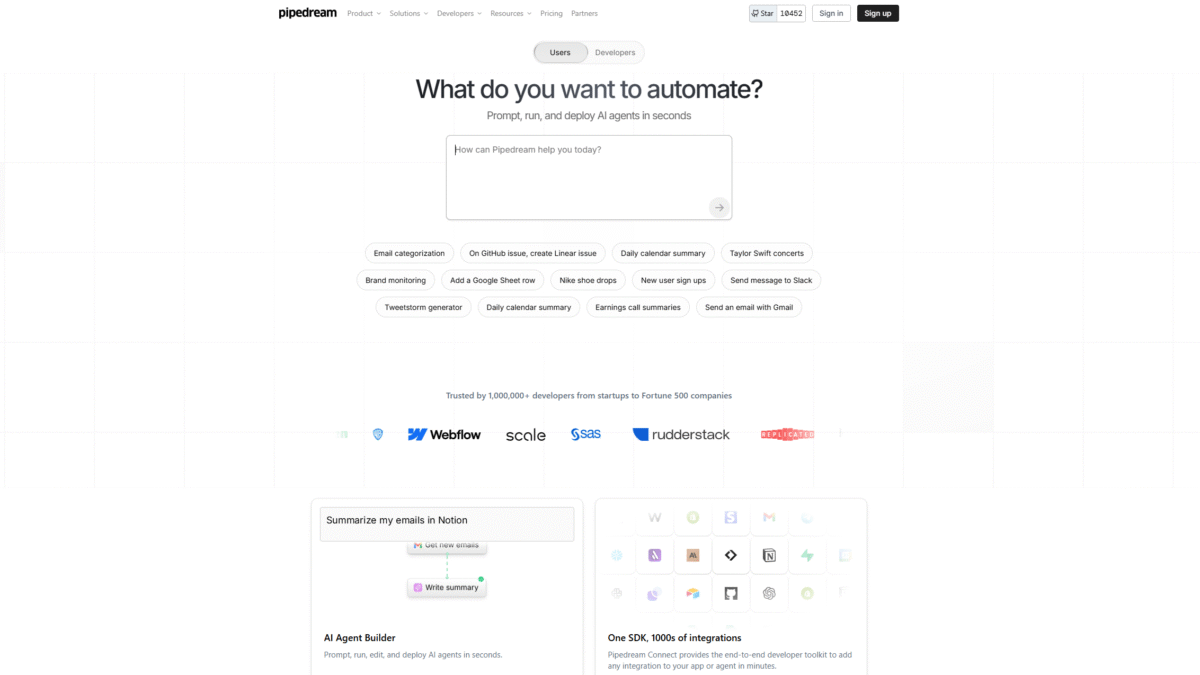
Master Webhook Integration with Zero-Code Workflows
In today’s fast-moving digital world, seamless webhook integration is the key to connecting applications and automating workflows without writing a single line of server code. Whether you want to sync form submissions, process payment notifications, or trigger alerts from third-party services, a robust webhook integration strategy can transform scattered events into a unified, automated process. With Pipedream, you get the perfect blend of zero-code simplicity and code-level control when you need it.
Why Webhook Integration Matters
Traditional API polling is resource-intensive and introduces latency. Webhooks flip the script by pushing data the moment an event occurs. This real-time flow unlocks faster reaction times, lower server costs, and more responsive applications. When you leverage webhook integration in your stack, you reduce overhead and simplify your architecture.
How to Set Up Webhook Integration Without Code
Setting up webhook integration typically requires server hosting, authentication, and error handling. Pipedream removes these hurdles by providing an intuitive interface and built-in infrastructure:
1. Create a New Workflow
Log into your Pipedream account and click “New Workflow.” Choose “HTTP / Webhook” as your trigger.
2. Configure Your Webhook Endpoint
Pipedream instantly generates a unique URL. Copy this endpoint and paste it into your source application’s webhook settings.
3. Add Steps and Logic
Drag and drop pre-built actions or write a few lines of JavaScript, Python, Go, or Bash to transform incoming data. No server management required.
4. Test and Deploy
Send a test payload to your Pipedream endpoint. Watch your workflow execute in real time, then deploy with one click to run continuously on Pipedream’s servers.
Key Features for Zero-Code Workflows
- Instant Deployment: Go from idea to production in minutes without configuring servers.
- Pre-Built Components: Integrate with 2,500+ APIs, including Slack, Stripe, and GitHub.
- Built-In Services: Utilize queues, private networks, and data stores with a single click.
- AI-Powered Actions: Use AI to generate API calls and field mappings trained on integrated service docs.
- Custom Code: When needed, inject Node.js, Python, Go, or Bash for advanced logic.
Real-World Use Cases
- Payment Processing: Trigger downstream accounting or CRM updates immediately after a transaction.
- Form Submissions: Route leads into your marketing stack, enrich records, and send follow-up emails in real time.
- Error Alerts: Catch failed jobs or server errors and push notifications to Slack or PagerDuty instantly.
- Data Synchronization: Mirror events from e-commerce platforms into a data warehouse without building ETL pipelines.
Best Practices for Reliable Integrations
Even with zero-code tools, reliability is paramount. Follow these guidelines:
- Retry Policies: Implement exponential backoff for transient failures.
- Validation: Verify signatures or tokens to secure your webhook integration.
- Logging & Monitoring: Use Pipedream’s built-in logs and alerts to catch errors early.
- Idempotency: Ensure duplicate events don’t trigger unintended side effects.
Why Choose Pipedream for Webhook Integration
Pipedream stands out as the fastest, most flexible platform to automate event-driven workflows. You get full code-level control when you need it and intuitive, zero-code building blocks when you don’t. Thousands of developers rely on Pipedream’s global infrastructure to run their critical processes 24x7x365.
Get Started Today
Ready to add powerful, real-time automation to your stack? Get Started with Pipedreamcrm for Free Today and unlock the full potential of webhook integration without managing any servers.
